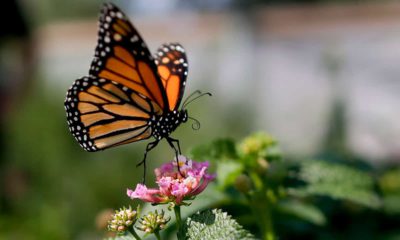Published
5 years agoon

There’s nothing new about political jousting over shares of a limited but valuable resource.
For instance, Californians have been squabbling for decades over divvying up water supplies among agricultural interests, municipal consumers and the natural environment. The conflict never goes away but increases in intensity every time the state experiences one of its periodic droughts — and this so-far dry autumn may be a harbinger of another such dry spell.

Dan Walters
Opinion
The annual business of writing a new state budget is always an exercise in political rationing. Even in times of prosperity, when the state treasury is awash in tax money, there’s never quite enough to satisfy all of the demands and expressions of urgent need. More for schools, more for health care, more for colleges, more for child care or more for prisons?
Those who hire the most and best lobbyists, shower legislators with campaign contributions and wage lavish media campaigns tend over time to fare the best when Capitol politicians decide who gets how much cash.
The allocations of water and money obvious have serious impacts on the contending parties, but usually they are not all-or-nothing situations. Even the losers generally wind up with something, even if they see it as not enough.
A new political free-for-all is just beginning and this time it is all-or-nothing, potentially with life-or-death consequences — who gets the very limited initial supply of vaccine against the potentially deadly coronavirus.
Gov. Gavin Newsom said last week that he expects California to receive an initial allocation of 327,000 doses of vaccine in mid-December. His administration wants to prioritize vaccinations of health care workers who are most in danger of being infected with the virus.
Few would argue with that intent, but the initital vaccine supply doesn’t come close to covering everyone who falls into that general category. California has more than two million health care workers, and even within that group, there’s a certain level of competition.
Organizations representing local-term care facilities, otherwise known as nursing homes, are pressing for first-tier priority, contending that their elderly clients are being disproportionately infected, often with fatal consequences.
However, another argument is being made for nurses, doctors and others who are directly caring for COVID-19 victims in hospitals.
Expanding vaccinations beyond health care workers will be even more daunting because no one knows when and how many additional doses of vaccine will be coming, other than sometime next year. After the implicit demand from health care workers is met, who’s next?
Two state legislators are pressing for teachers to be placed near the top of the prioritization list, citing the sharp decline in educational achievement while students are confined at home and the urgent need for resuming classroom instruction.
Assemblymembers Jordan Cunningham, a San Luis Obispo Republican, and Patrick O’Donnell, a Long Beach Democrat, said in a letter to state health officials, “Interim reports from across the state show increasing rates of failure among students, especially those in lower-income neighborhoods. … Our state’s children cannot afford to wait.”
A recent national study estimated that lower levels of education among students forced to attend classes via the Internet could result in shorter life spans. Several recent articles, including one in CalMatters.org, have detailed how absenteeism has increased and learning has decreased, especially among poor students.
This is heavy-duty stuff. Deciding who gets — and who doesn’t get — the vaccine in the earliest stages of the vaccination effort could be deciding who lives and who dies.
CalMatters is a public interest journalism venture committed to explaining how California’s state Capitol works and why it matters. For more stories by Dan Walters, go to calmatters.org/commentary.


Tulare County Gang Member, Two Fresnans Head to Federal Prison


California Pins Vaccine Hopes on Biden Administration


Walters: After COVID-19, Drought Threat Still Looms


Fierce California Winds Fan Fires, Topple Trees and Trucks


Monarch Butterfly Population Moves Closer to Extinction


Newsom Sets New Tone for California, White House Partnership




